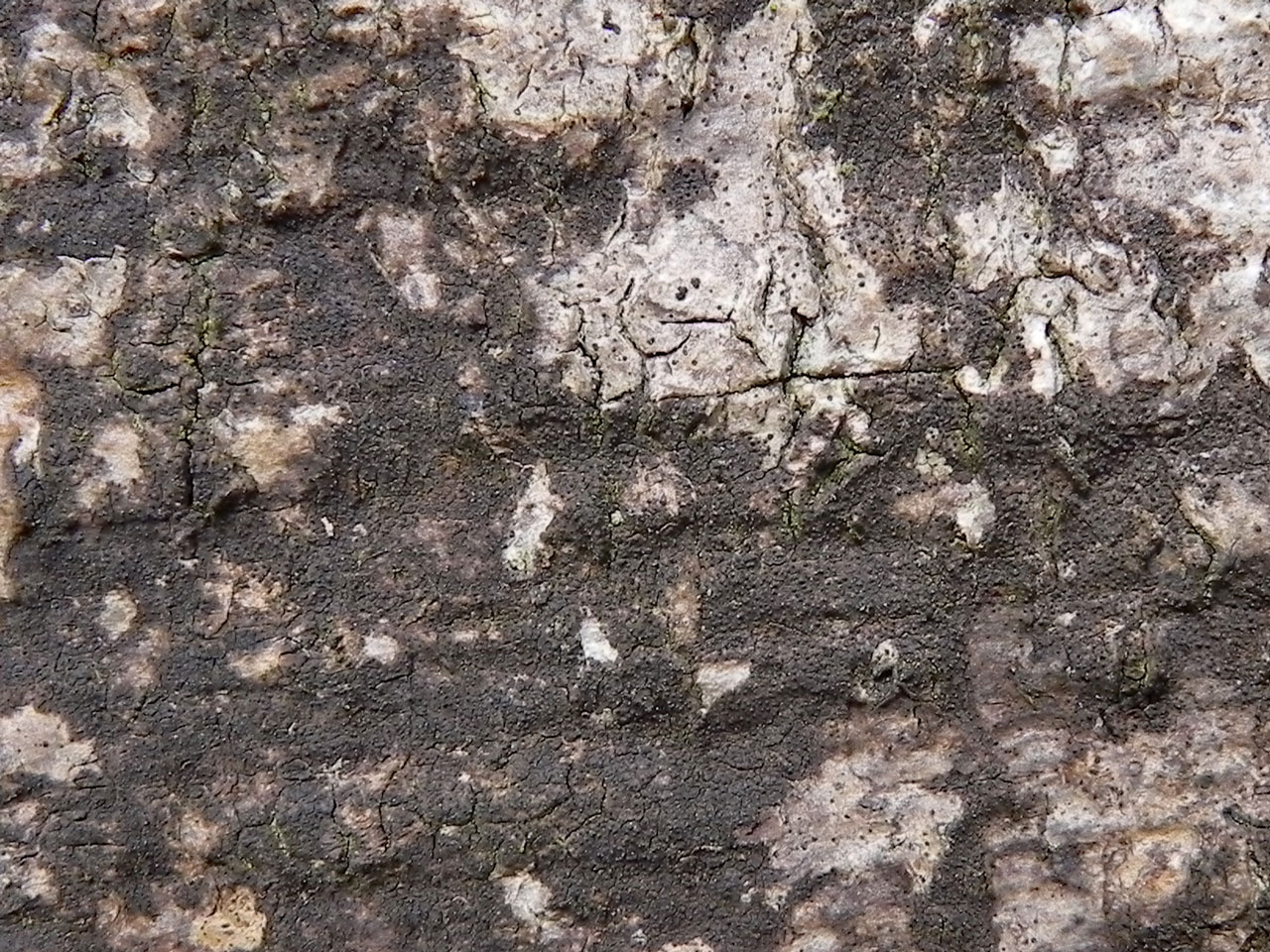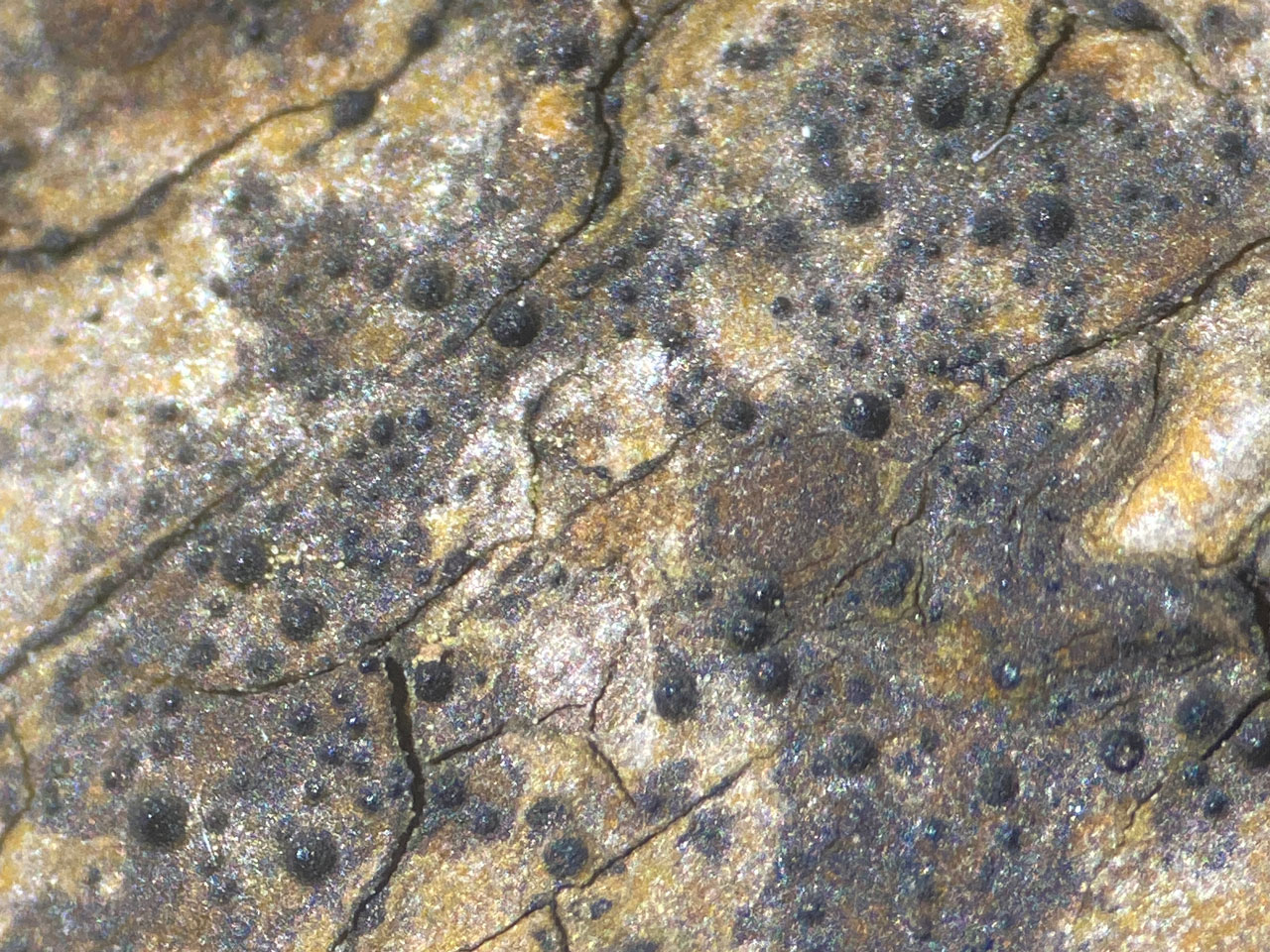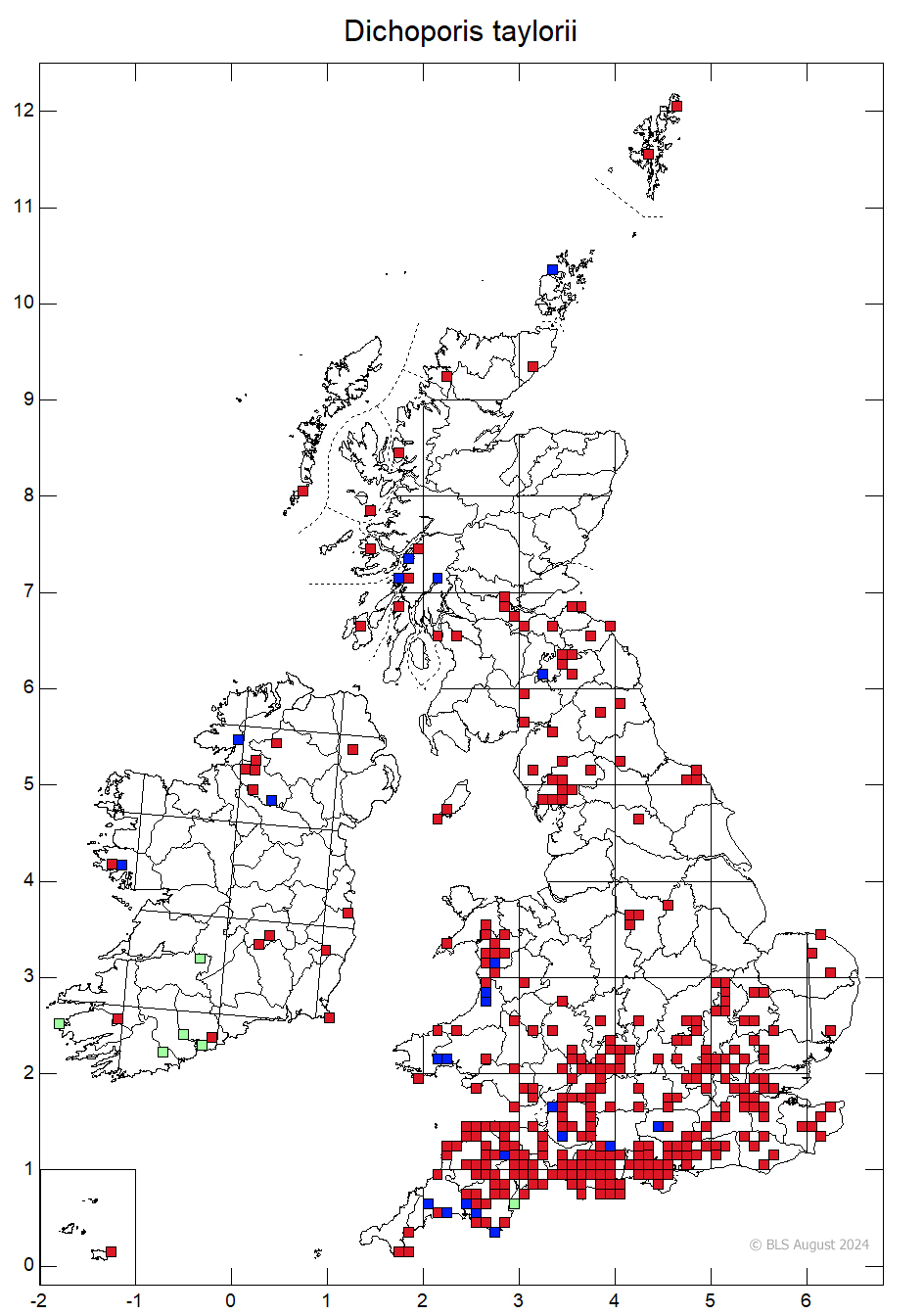Dichoporis taylorii
An increasing species that forms dark brown patches and streaks in wounds and rain tracks on damaged trees. Well developed material has both larger conical perithecia and smaller semiglobose pycnidia, giving a distinctive appearance. The one septate ascospores readily separate into part-spores.
Thallus brown, olive brown or dark brown, continuous or slightly cracked, thin, mostly immersed in bark. Ascomata 0.2–0.3 mm diam., projecting, immersed only in the lower quarter, conical. Ascospores (16–) 19–24 (–27) × (3.5–) 4–5 μm, 1-septate, separating into part-spores at ascus dehiscence or before, part-spores (8.5–) 9.5–12.5 (–14.5) × (3–) 3.5–5 (–5.5) μm. Macropycnidia semiglobose, 50–120 μm diam., with an involucrellum; macroconidia (12.5–) 13.5–17.5 (–20) × (2–) 2.5–3 (–3.5) μm, (0- )1-septate, at each end with a poorly visible gelatinous appendage 1.5–4.5 × 1–2 μm in size; each cell containing (2-) 3-4 (-5) persistent oil droplets; conidiogenous cells 5–11.5 × 2–2.5 μm in size; micropycnidia like the macropycnidia but 50–100 μm diam.; microconidia fusiform or subfusiform, 2.5–4 × 1–1.5 μm.
Usually distinguished in the field from Porina aenea or P. borreri by the numerous pycnidia scattered among the larger, often ± conical perithecia.
On usually ± smooth bark of mature trees in wound and rain tracks (especially Sycamore, Beech and Ash) in sheltered situations, or more rarely on limestone. A good coloniser and found on damaged young trees in abandoned coppices as well as old growth woodland.

Local, throughout Britain and Ireland, rarer in N. England and N. Scotland. The species has become much more common in recent years, especially in southern England.
This lichen was considered rather scarce a couple of decades ago, but has been recorded much more widely recently. This does appear to be due to a genuine spread north and east, rather than just being overlooked. It readily colonises damaged trees in younger woods, including abandoned coppices, so is not confined to undisturbed old woods. The spread could be in response to clearer air or warmer temperatures or a combination of both.
Britain: an International Responsibility Species
Scotland: Priority Taxon for Biodiversity in Scotland
Cannon, P., Coppins, B., Aptroot, A., Sanderson, A. & Simkin, J. (2023). Perithecial genera I, including Acrocordia, Alloarthopyrenia, Anisomeridium, Antennulariella, Arthopyrenia, Celothelium, Cyrtidula, Dichoporis, Eopyrenula, Julella, Leptorhaphis, Leptosillia, Lithothelium, Mycomicrothelia, Mycoporum, Naetrocymbe, Pyrenula, Rhaphidicyrtis, Sarcopyrenia, Swinscowia and Tomasellia. Revisions of British and Irish Lichens 37: 1-59.
Text by Neil A Sanderson based on Cannon et al (2023)



